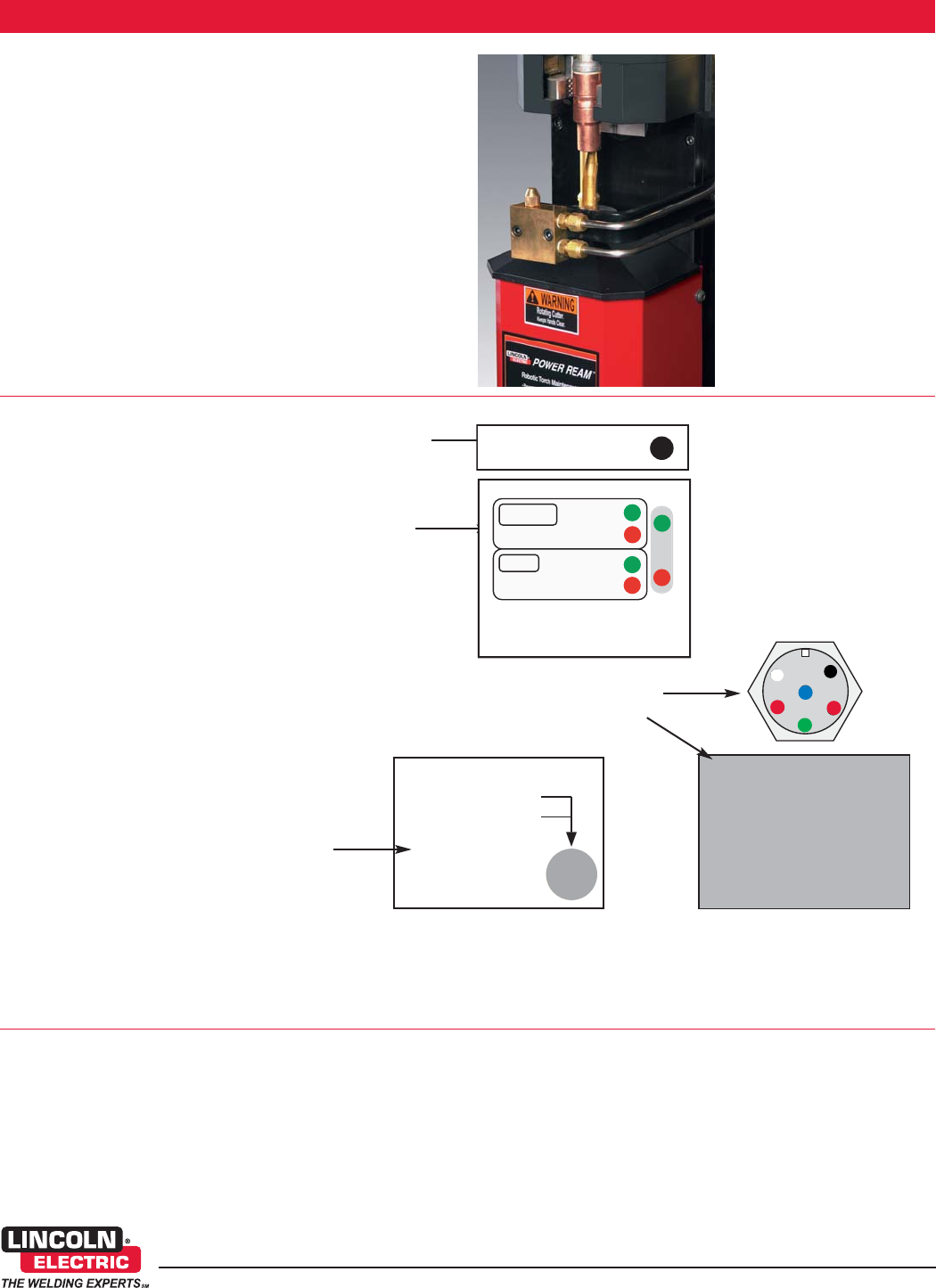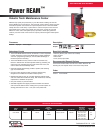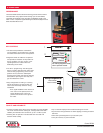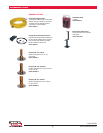
WIRING
1. OV DC (WHT)
2. +24V DC (RED)
3. Complete (GRN)
4. Start (ORG)
5. Spray (BLK)
6. Error (BLU)
Power REAM
[2]
A CLOSER LOOK
www.lincolnelectric.com
PERFORMANCE
• Powerful constant torque drive system provides non-stall capability.
The motor travels with the reaming bit, a design feature that aids
reliability and extends motor service life, up to 2.4 million cycles.
• Reaming bits are precision manufactured from tool steel with
titanium nitride coating.
• Dry-run feature helps prevent accidental damage to the unit.
• Synchronous timing belt does not allow slippage, avoiding excessive
belt wear.
• Wire cutter jaws designed for up to 90,000 cycles.
• One-year warranty on parts and labor.
KEY CONTROLS
1 Fail-safe reset pushbutton overrides the
microcontroller’s commands to the cylinders
and sends them back to their home position.
2 Diagnostic LEDs are visible to an operator
and provide an indication of the position of
the air cylinders. If an error occurs, corre-
sponding flash error codes make trou-
bleshooting much easier.
3 “No Error” programming: The setup push-
button is used to sequence the reamer sole-
noids for easy programming of the correct
position the very first time. Subsequent
pressing of the button will raise the reaming
head (without spinning the ream bit), then
grip and release the nozzle.
4 Easy configuration of sinking vs. sourcing
inputs and outputs. No need to open the
case to set internal dip-switches during
installation!
-Error signal feedback to the robot: If an
error occurs in the process, then the
Power REAM returns to its home
position and sends an error signal to
the robot.
Setup Sequencer
Press to Clamp
Hold to Raise
1
3
2
QUALITY AND RELIABILITY
4
RESET
Clamp
Open
Closed
Lift
Top
Bottom
For flashing diagnostic codes,
refer to operator manual.
The Power REAM controls the entire reaming process with its internal
microcontroller. Every aspect of the reaming cycle is commanded,
monitored and checked by the controller. The feedback signal to the
robot is a true “complete” signal indicating that the entire sequence has
been executed without error.






